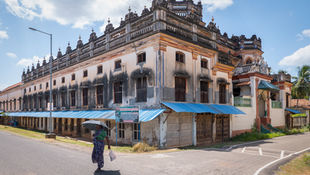Two decades ago, there was a popular belief that reinforced cement concrete (RCC) structures would last forever. But over time, it was realized that it would be very difficult to do an RCC roof that does not leak. So, it became mandatory to use waterproofing chemicals that can be harmful to people. Major reasons for leaks were low-quality materials, improper mixing, low strength, and durability of the concrete. As per the American Concrete Institute, the definition of the durability of concrete is “the ability of a material to resist weathering action, chemical attack, abrasion, and other conditions of service." While the quality of materials and mixing ratios can be regularized, concrete strength and durability are determined by a number of variables, some of which are beyond our control. Thus, this abstract talks about concrete, its durability, factors that affect it, and some common ways to enhance it.
Factors Influencing Durability of Concrete
Temperature changes are one of the main factors that influence the durability of concrete. Every degree of temperature variation causes concrete to expand or contract.
Even if the workmanship is perfect, the concrete tends to develop fine cracks which widen over a period of time. (if the workmanship is very bad, then the roof will start leaking in two years or less). Water enters through these cracks and thus, reinforcement starts to corrode. This is the reason why the RCC buildings which were built in the eighties and nineties began developing leaks in recent years.
Lack of overhang of the roof or coping of walls, leads to hairline cracks in the cement plaster, affecting its durability. The overhang of the roofs and/or coping of the parapets is very important for the durability of the external cement plaster because it develops shrinkage fractures when directly exposed to the weather. These widen, allowing water to enter inside the plaster, in turn leading to loss of adhesion.

Ways to Improve Durability of Concrete
It is very expensive to repair these reinforced concrete slabs as they require huge maintenance expenditure over some time. The durability of reinforced concrete roofs, external plaster, and paints depends on the protection it receives from the driving rains and the scorching sun.

Given below are some of the common ways to protect the roof slab from direct sunlight and rain:
A weathering course with brick jelly concrete and clay tile on top of the RCC roof will protect the concrete layer from direct exposure to sun and rain. As a result, the durability of the concrete may increase.
However, this increases the thickness of the roof and has an impact on the thermal performance in hot, humid climates like Chennai and Kerala. Increased thickness of roof slab expands its heat retention capacity and radiates it into the room at night when maximum comfort is required.
In the case of a sloping RCC roof, one can put some kind of roof tiles on top to protect it from direct exposure to sun and rain. I extensively use Mangalore tiles with an air column in between. A light Mangalore tiled roof will start radiating the heat immediately so that it is comfortable during the night.
The ongoing trend is to provide a sloping steel truss on top of a flat RCC roof. This not only improves the durability of the concrete but offers thermal comfort in the house as well. Even though this procedure costs more, it can prevent leaking of the roof and save money in the long run.
There is an old saying in English “Give a mud house a hat and a good pair of boots, it will last forever”. The hat is the roof and the boots are the foundation/basement of the building. This is true for all forms of building constructions, not only mud houses.
I have always remembered the overhangs given on traditional compound walls in Kerala and attempted to implement them in my work as well. The overhang of the roof not only protects the external walls and the painting but also increases thermal comfort.

A sunshade (a kind of overhang) is not something that has to be given only above the windows. It can be given perpetually along the exterior of the building or it can be made into a box around the windows.

Conclusion:
The durability of concrete is a crucial factor in designing buildings. Studies have shown that even if the concrete is made with high-quality materials and workmanship, it is susceptible to leaks after twenty or thirty years. But, research is still going on to make it better. In the meantime, proper designing, proportioning, placing, finishing, testing, inspection, and curing can all contribute to extending the durability of concrete. Therefore, adequate care should be taken and all standardized testing must be carried out before using the concrete.















Comments